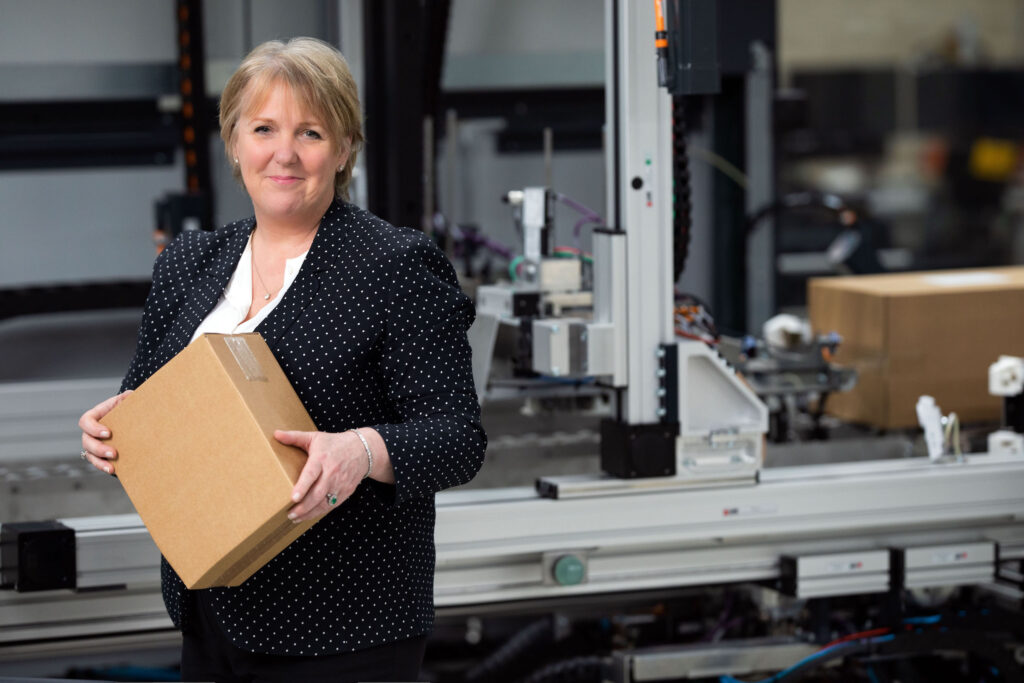Online retailers will need to find ways of working in the new normal to support what is likely to be an increasingly vital direct channel. But how will fulfilment operations cope with the necessity for social distancing? By Jo Bradley, business development manager at Packaging By Quadient.
THE immediate impact of the Covid-19 crisis has been coping with lockdown conditions. With non-essential high street shops closing their doors, those with efficient multichannel operations have been able to pivot their operations to a single, direct channel.
In addition to becoming essential to business continuity, the direct channel has also risen to become a critical supply line for most UK households. Those on lockdown are seeking not only groceries online but also a vast range of items such as fitness equipment, cooking utensils, home office equipment and grooming products.
While nobody can predict precisely what scenario will unfold over the coming months, it seems that in the post lockdown world, until we reach a time when a coronavirus vaccination is available, it is likely that we will all be living under a stringent public health regime, with any number of restrictions to normal life and the way we shop, including social separation.
There are suggestions that life patterns may already have changed irrevocably and even in a post-vaccination world, many who have become familiar and comfortable with the convenient experience of working from home, may wish to stay there. There may be a general reluctance to venture out to the shops for those who have grown accustomed to relying on home delivery of online purchases. Many have also discovered they can shop online direct from producers, such as breweries, bypassing more familiar retailers.
This all points to a likelihood that the direct channel is likely to become much more important. Going forward, companies will certainly need to adapt to dynamic changes in demand. Returning to the golden rule of ‘success through efficiency’, will lead companies towards solutions that can help meet the demands of increasing volumes productively.
But companies fulfilling orders in this field will also need to prioritise the health of their staff, limiting person-to-person contact among other measures. Warehouse space may well be a significant constraint, as social distancing becomes a required working practice.
Some retailers have already decided they cannot manage their fulfilment operations with sufficient safety and have had to close even their direct channel. Finding ways to reduce human interaction in the fulfilment process will, of course, involve some level of automation and an ability to keep staff separated within a warehouse or fulfilment centre.
This may be easier in some areas of the intralogistics operation than others. But, can safe separation be easily achieved in the packing area? The packaging of online orders for despatch is typically a manual process, often requiring scores of people, perhaps one hundred or more, packing parcels and processing orders at packing benches placed in close proximity to one another. How will social distancing be achieved under such circumstances? Warehouse space is expensive and may not necessarily be available.
At peak, the traditional approach taken by most ecommerce businesses is to take on extra staff for that period. However, in the new normal, where demand for online deliveries is likely to remain ‘at peak’ for the foreseeable future, how will businesses cope with finding the necessary numbers of workers needed to meet demand, while also finding the extra space required for social distancing?
Fortunately, packaging technology has advanced significantly in the last few years. Intelligent systems have been developed that can rapidly tailor-make cartons to the exact size of a product or order quantity, automatically, as required.
Such systems can construct, tape, weigh and label each parcel in one seamless process. By building the optimum size parcel around the order-items using corrugated packaging, the technology reduces the box size by 50%. This minimises shipping costs throughout the fulfilment process – some ecommerce businesses have been able to remove up to one trailer a day from their distribution operation.
With the right technology, an automated fit-to-size packaging solution can produce up to 1,100 packages per hour, removing the need for a large labour force, numerous packing benches and all the extra space required for social distancing. Such a system offers the flexibility to cope with unexpected peaks and allows for a fully scalable solution. And importantly, online retailers can free-up staff for other tasks such as picking or processing inbound goods.
With regards to social distancing, the technology makes it possible to produce the high-volume packing throughput most ecommerce businesses experience – even at peak – while complying to safe social distancing requirements.
Coronavirus has radically changed the way consumers live their lives, and businesses will have to adapt quickly to the unexpected demands of the ‘new normal’. Online orders are set to rise, and in response, the fulfilment operation and packing area of every business will need ramp up performance while adjusting to strict guidelines around social distancing. But space constraints, social distancing and labour issues are no longer a barrier to progress. The technology exists to transform packaging performance and keep in pace with the new normal.














